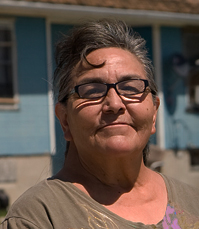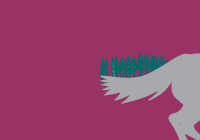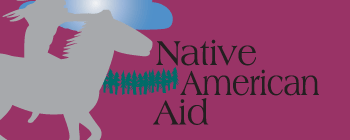|
|

 |
About 22% of our country’s 5.2 million Native Americans live on tribal lands (2010 U.S. Census). Living conditions on the reservations have been cited as "comparable to Third World," (May 5 2004, Gallup Independent). It is impossible to succinctly describe the many factors that have contributed to the challenges that Native America faces today, but the following facts about the most pressing issues of economics, health, and housing give a hint of what life is like for many first Americans.
Typically, Tribal and Federal governments are the largest employers on the reservations. Many households are overcrowded and earn only social security, disability or veteran's income. The scarcity of jobs and lack of economic opportunity mean that, depending on the reservation, four to eight out of ten adults on reservations are unemployed. Among American Indians who are employed, many are earning below poverty wages (2005 BIA American Indian Population & Labor Force Report).
The overall percentage of American Indians living below the federal poverty line is 28.2% (2008, American Indians Census Facts). The disparity for American Indians living below poverty on the reservations is even greater, reaching 38% to 63% in our service area (2006, National Center for Education Statistics, and other sources).
Often, heads of household are forced to leave the reservation to seek work, and grandparents take on the role of raising their grandchildren. In order to survive, extended families pool their meager resources as a way to meet basic needs. The relative poverty still experienced by these blended families is best understood as the gap between the overall need and the need that goes unmet.
There is a housing crisis in Indian country. Despite the Indian Housing Authority's (IHAs) recent efforts, the need for adequate housing on reservations remains acute. One legislator deplored the fact that “there are 90,000 homeless or underhoused Indian families, and that 30% of Indian housing is overcrowded and less than 50% of it is connected to a public sewer.” (March 8, 2004, Indian Country Today).
In addition, many American Indians are living in substandard housing. About 40% of on-reservation housing is considered inadequate (2003, U.S. Commission on Civil Rights). The waiting list for tribal housing is long; the wait is often three years or more, and overcrowding is inevitable. Most families will not turn away family members or anyone who needs a place to stay. It is not uncommon for 3 or more generations to live in a two-bedroom home with inadequate plumbing, kitchen facilities, cooling, and heating.
Further increasing the concerns with reservation housing is the noticeable absence of utilities. While most Americans take running water, telephones, and electricity for granted, many reservation families live without these amenities. On a seriously stretched budget, utilities are viewed as luxuries compared to food and transportation. Overcrowding, substandard dwellings, and lack of utilities all increase the potential for health risk, especially in rural and remote areas where there is a lack of accessible healthcare.
"The average life expectancy for Native Americans has improved yet still trails that of other Americans by almost 5 years” (2010, HHS Indian Health Disparities Fact Sheet). About 55% of American Indians rely on the Indian Health Service for medical care (2006, Indian Health Facts). Yet, the Indian Health Care Improvement Act only meets about 60% of their health needs (2003, U.S. Commission on Civil Rights).
Due to underfunding, Indian Health Service facilities are crisis-driven and leave a wide gap in adequate and preventative health care for many Native Americans on the reservations. Pharmacies and doctor's offices outside of hospitals are completely non-existent in some communities.
The pressures to shift from a traditional way of life toward a Western lifestyle has dramatically impacted the health and welfare of the Native peoples and created a terrible epidemic of chronic diseases such as diabetes, heart disease, tuberculosis, and cancer. The statistics are alarming.
- Heart disease is the leading cause of death for American Indians (2003, Center for Disease Control).
- Due to the link between heart disease, diabetes, poverty, and quality of nutrition and health care, 36% of Natives with heart disease will die before age 65 compared to 15% of Caucasians (2001, HHS Office of Minority Health).
- American Indians are 177% more likely to die from diabetes (2011, Indian Health Disparities).
- 500% are more likely to die from tuberculosis (2011, Indian Health Disparities).
- 82% are more likely to die from suicide (2011, Indian Health Disparities).
- Cancer rates and disparities related to cancer treatment are higher than for other Americans (2005, Native People for Cancer Control).
- Infant death rates are 60% higher than for Caucasians (2001, HHS Office of Minority Health).
The facts presented are important realities about the living conditions faced by many Native Americans in this country — facts that every non-Native American needs to know.
How can I help? |
|
|















